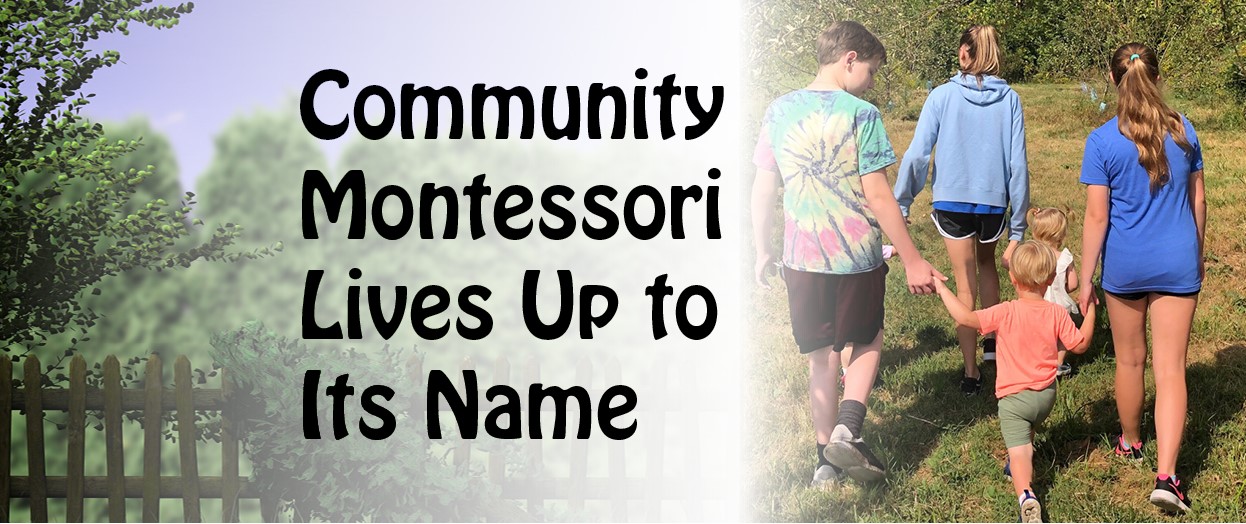Community Comes First at Community Montessori School
Perhaps no education entity in the area is more aptly named than Community Montessori School, a toddler through eighth-grade school that sits on 13 acres on Stone Road in south Lexington.
CMS, of course, follows the Montessori method but also embraces community as a central tenet of the program.
“I love the name of our school,” Head of School Nelson Griffin said. “As humans, community is a fundamental need. We all need to feel connected with each other, and Montessori does that better than any method that I’ve encountered.”
Griffin is in his first year at CMS, which will celebrate its 50th anniversary next year.
A University of North Carolina graduate with a degree in American studies, Griffin earned his master’s in Southern studies at Ole Miss.
While in Oxford, he taught 3-6 year-olds in a Montessori program, an experience that changed his career path.
He moved to Atlanta where he trained at the Association Montessori International USA. He then taught for six years at a Montessori school in Memphis. He also served on the board of the Montessori Alliance of Tennessee for five years and was the group’s president for three.
Along the way, Griffin was captivated by the Montessori method. So what is the Montessori way?
Dr. Maria Montessori, who was the first woman to practice medicine in Italy, was fascinated by the children she saw in her practice. She applied her study of biology, psychiatry and anthropology to start her own school, opening her first Casa dei Bambini (Children’s House) in 1907 in one of the poorest areas in Rome. Her time-tested principles of education are elegant in their simplicity:
 Children will develop and learn naturally when given a supportive environment and allowed to explore the world at their own pace.
Children will develop and learn naturally when given a supportive environment and allowed to explore the world at their own pace.
The program trusts and respects children to be their own best guide to education.
Highlights of the program include:
-Children come together in multi-age groups, typically three age levels in the same classroom, and students stay with the same teacher for three years.
-Students use materials specially designed by Maria Montessori with the child’s needs and interests in mind.
-Learning is a hands-on experience. Students rarely use texts or workbooks.
-Montessori is a child-centered approach. The focus is not on teachers teaching but on children learning.
-Children have freedom of movement and choice in the classroom. Children select their own work, and their activities are self-directed.
-Because children learn at their own pace and advance to new material as they are ready, there are no grades, few tests and virtually no homework.
All of that is embraced at CMS, which also stresses the importance of community.
“Montessori emphasizes the social dynamics between child and child, and adults and child,” Griffin said. “This is nurtured through building connections and emphasizing relationships. In the South, this is called good manners and politeness. We call it grace and courtesy.”
Relationships are enhanced because the Montessori way is anti-authoritarian. Teachers are called guides who help students discover their own paths to learning.
“Interactions in a good Montessori classroom are like appreciating a really good symphony. There is a joyful noise in the classroom,” Griffin said.
CMS also practices land-based education on grounds that include a stream, a barn, chicken coop, apple orchard, apiary (bees), monarch butterfly way station, compost bin, flower gardens, blackberry and asparagus patches, plus a picnic area and fenced-in playground.
A sense of community is fostered because everyone in the school contributes in these outdoor activities like when older students take the 3-6 year-olds on nature walks around campus.
 “Those younger students bring out the softer side of the adolescents, and the younger kids love being with the middle schoolers because they’re the big kids,” Griffin said.
“Those younger students bring out the softer side of the adolescents, and the younger kids love being with the middle schoolers because they’re the big kids,” Griffin said.
Older students read to the younger ones and escort the toddlers to their classroom at the start of the day. School-wide celebrations and activities in the large, central great room also promote community.
“There also is spontaneity to it when you see older students talk with the younger ones during the course of the day,” Griffin said. “Most of all, Montessori creates fellowship. Watching that happen is a beautiful thing.”

